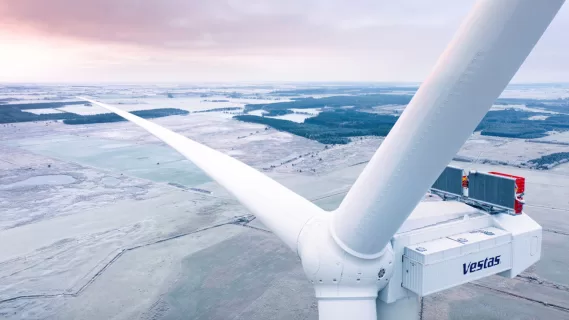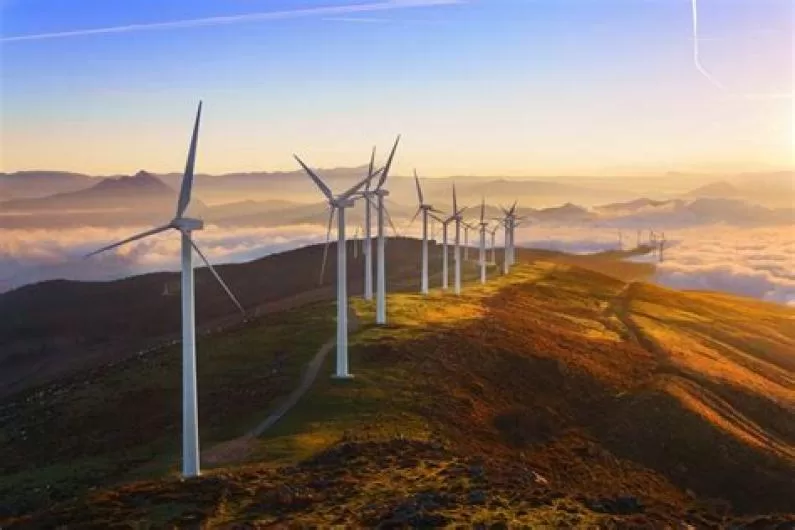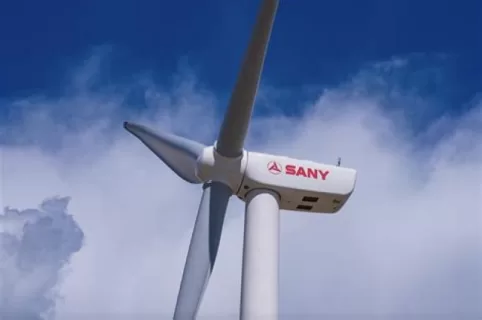The world’s most powerful onshore wind turbine has been turned on and is operational. At 15MW, the turbine is rated twice the figure of other market-leading models. The Chinese manufacturer, Sany, noted that they were pleased with this ambitious milestone. The company also noted that the turbine had set two new global records. It is the largest single-unit capacity onshore turbine and has the largest rotor diameter at 270 meters. Furthermore, the turbine model has an extended design life of 25 to 30 years and blade lengths of 131 meters. A single turbine, according to manufacturers, is expected to generate enough electricity to power 16,000 households. With the wind turbine connected to the grid, Sany expects to conduct performance test for mass production. These include tests to verify reliability of its components and overall designs to enhance it. The turbine is commended as a revolutionary approach in the energy industry.
The State of Affairs Regarding the World’s Most Powerful Onshore Wind Turbine
The operation of the world’s most powerful onshore wind turbine has received accolades as a game changer. The turbine is more than twice as powerful as those produced by other companies in the field. For instance, it is more powerful than Denmark’s Vestas, which unveiled its 7.2 MW EnVentus in 2022. It also exceeds that of Siemens Gamesa, which unveiled a 7MW onshore machine. At 15MW, the turbine is rated the same as the largest offshore wind turbines produced in the west. The production of these magnanimous wind turbines is an endeavor that commenced earlier this year.

Leveraging the airfoil design, the company asserts that the design enables a more robust structure. The supersizing of wind turbines has been an aspect of great insight in the energy sector. However there are contentious issues around its implementation. One is that the construction of even larger models is fueling reliability issues. Furthermore, many note that it would cause supply challenges, including the transport of machines. However, current global climate focus on carbon neutrality and net zero has aimed to change these views. The race to save the planet has picked up at a fairly good rate as numerous innovations are witnessed.
The Significance of China’s Wind Giants in Improving the Energy Sector.
The implementation of the world’s most powerful onshore wind turbines is of unprecedented significance. Despite the contention and challenges, China’s wind giants have steamed ahead with producing more powerful turbines. Last month, three manufactures noted their plans to produce offshore turbines of 25MW capacity. These ambitious projects are just a few of what China has been able to do. Earlier last week, China unveiled the implementation of the world’s largest offshore solar plant. The project is expected to generate 1,800 GWh of power annually.
Furthermore, it is expected to meet the energy needs of close to 2.7 million people in the region. In a statement, China Energy noted that the output will be equivalent to burning 503,800 tonnes of coal. China Energy Investments connected the first instalments of its 1GW offshore solar farm to the grid. Furthermore, the offshore solar farm is expected to be the largest of its kind in the world. It will have nearly 3.000 platforms and cover over 1,200ha of ocean surface, a monumental feat.
Also read:
GE Vernova’s Largest Ever Wind Turbine Order for SunZia Project
What Makes the Onshore wind turbines From Sany the Largest?
They are set to have 131 meters long blades that will have a 57,256 m2 sweep area. Their rotor diameters will also be at a record-breaking 270 meters.
It’s specifications hit a notch higher when compared to the (now) previous largest onshore wind turbine (Goldwind’s 2023 12 MW onshore wind turbine) which featured a 240 meter rotor diameter. The renewable energy company also boasts of it’s utilization of pultrued carbon fibers in the manufacturing of the turbines.

Comparison to Offshore Wind Turbines
Currently, the bar set for offshore wind energy production capacity is by China’s 20 MW Mingyang Smart Energy installed in China’s coastal region of Hainan. Dongfang Electric Corporation has however just announced the launch of a 26 MW offshore wind turbine that is set to be the world’s largest.
Compared to these turbines, the 15 MW onshore turbines hits the bar just a little too low.
This difference is attributed to the advantages that come with an offshore setting for wind turbines. These include:
• Wind conditions. The vast open space in bodies of water comes with stronger and more consistent wind that greatly contribute to the efficiency of offshore wind turbines.
• Wind farm scalability. Unlike onshore wind farms, turbines installed in bodies of water do not suffer expansion constrains due to land availability and regulations.
• Environmental impact. Turbines installed on land are in a limited resource, whereas those on water bodies do not necessarily get this constraint. Also, offshore farms do not have to worry about the issue of noise pollution. These setbacks hold back the production capacity of onshore wind farms – contributing to the lesser energy generated by these farms.
Comparative advantages of onshore wind farms such as this project
The onshore wind farm by Sany will however have the following upsides compared to offshore wind farms:
• Lower installation and maintenance costs. It is much easier to install wind turbines on land that in water. It is also easier to access and do maintenance work on turbines installed on land compared to those is water. Those is water require complex logistics, additional construction of anchors and floating platforms just to make them (more) accessible.
• Grid transmission integration. Onshore wind farms are easily connected to the inland grid system as they are closer to populations and cost way less to come up with connection systems to it. Offshore winds on the other hand require additional underwater transmission cables and are also prone to energy losses over longer transmission distances – especially with older technologies that do not utilize high-voltage direct current transmission (HVDC).
Also read:



Hello Uttmarao H Jadhav,
Concerning specific details on the weight of the blades and the turbine, they have not been explicitly mentioned by the wind company. The details are however expected to be in the documentations for their operational testing phase.
It has however been mentioned that the components of the turbines will be, “lightweight”, due to the use of pultrued carbon fibers for their materials.
The height of the mast to be used for installation of the wind turbines is expected to be enormous too, just like the wind turbines themselves. The exact height measurement of the mast has however not yet been stated by the wind company.
What is the total weight of the blades and the turbine. What is the height of mast for installing such a huge windmill.